Anba Makar Church
Anba Makar Sanctuary
It is a great monument since its beginning in year 360 AD and attracted successive generations to it, from which hundreds of thousands of pious souls went to heaven to complete their testimony of Christ in heaven after they witnessed on earth.
It was rebuilt in the days of Pope Benjamin (the 38th patriarch) at the time of the entry of the Arabs, and Pope Benjamin inaugurated it at the invitation of the wilderness elders in the year 655 AD. Its main sanctuary is still known as Anba Makar sanctuary with its huge dome of 8 meters in diameter, and it is also called as the sanctuary of Anba Benjamin since the day he inaugurated it until today. However, its dome fell several times and was repaired more than once, and you look carefully looks at it can count the times of fall and restoration due to the difference in the color of the “mortar”.
The church now does not have from its early archaeological parts except the sanctuary of St. Benjamin and the sanctuary of John the Baptist and St. Mark only.
John the Baptist and Saint Mark Sanctuary
This Sanctuary was named after them both because the body of John the Baptist, which was carried from Palestine during the days of St. Anba Athanasius the Apostolic, and was buried in Alexandria, then moved from it and buried in the Monastery of Anba Makar during the days of persecution. During the excavation of the floor of the first khorus, in front of this sanctuary, a vault was found at an underground distance. From the old bricks, we went deep beneath it, and found these pure remains, and raised them with the rest of the other bones, and a coffin containing a complete body skeleton. The monastery issued a full and detailed report on this archaeological discovery and all the ancient historical evidence.
And when the head of St. Mark was carried and buried in this sanctuary, the Church assumed an apostolic dignity from that date and was called the Universal Church, and the name of Saint Mark became interchangeable with the name of John the Baptist for this sanctuary.
The wonderful images that decorated the sanctuary of John the Baptist still retain their bright colors and extreme accuracy, despite the fall of its dome and the exposure to external weather for hundreds of years.

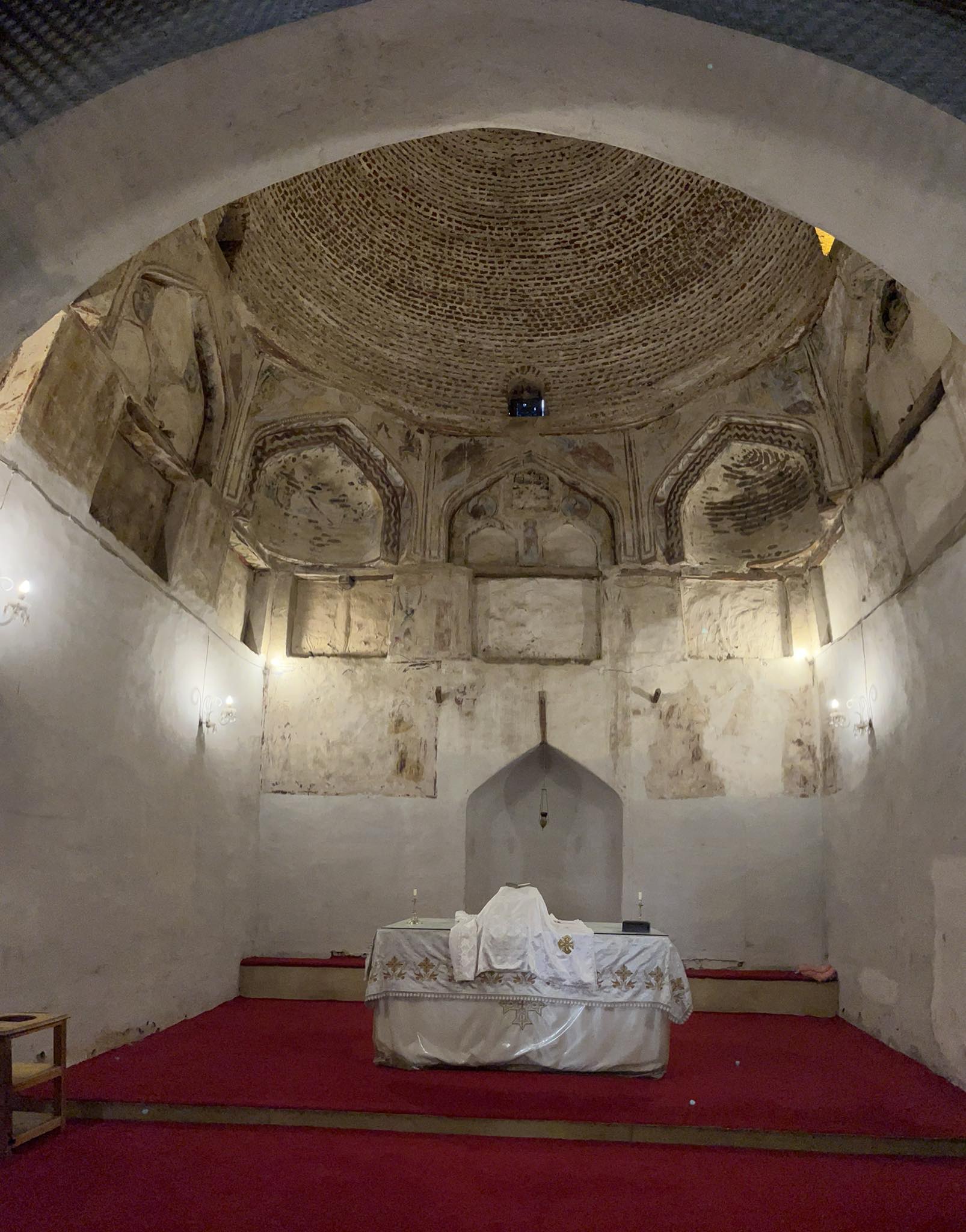
Bodies of saints:
The bodies of the three Makars
The three Makars are: the Egyptian called Anba Macarius the Great, and Macarius the Alexandrian, who is called al-Madani (in relation to the great city of Alexandria), and Anba Makar, the martyred bishop of Adkau (a city near Assiut). Many miracles occurred with the mention of these saints throughout the ages and years until the present day
These honored characters are presented in old icons as follows:
– Anba Makar Al-Kabir the Egyptian, carrying a cross (a symbol of hard work, mortification and self-sacrifice).
– Makar al-Iskandarani, carrying a ladder (a symbol of his passion for acquiring virtues by degrees).
– Anba Makar, Bishop of Edkau, carrying a small lamb in his arms (as a shepherd and as a martyr, he was led to the slaughter as his master, so his clothes were painted white).

The body of Anba Yoannis the short
As for the body of Anba Yoannis al-Qasir, it was moved to a private cabin in the church of the martyr Abba Sakhiroon. Saint Yoannis al-Qasir is the son of Anba Makar of the second generation, and the head of the great group of monks that followed him. He was famous for his humbleness and wise fatherhood, and the seat of his monasticism It was 15 kilometers southwest of the Monastery of Anba Makar, and when his monastery was destroyed, they moved his body to the Monastery of Saint Anba Makar.
The bodies of the patriarchs
According to the list of the patriarchs, their number is approximately sixteen of the popes, and all of them were originally monks of the monastery, and they recommended that their bodies be buried in their monastery, not out of fanaticism for the place, but optimism for their closeness to their intercessor and their first father, and longing for them to the home of their strife, tears, and vigil in their youth, “
for your servants take pleasure in its stones, and show favor to its dust.” (Psalm 102:14).
In the early ages, before the thirteenth century, the bodies – of the forty-nine martyrs or the patriarchs – were outside the walls of the monastery, in a small monastery for them near the Monastery of Zakariyya (see the Chrism book). But after the monks gathered inside the walls, they brought the bodies with them, and they kept moving from place to place until we gathered them together in one booth in the second khorus of Anba Makar church.
It seems that this cabin was previously built for this purpose because its location is above the underground vault in which the bones of Elisha the Prophet and John the Baptist were found, also a complete sarcophagus of a complete mummified body wrapped in service clothes.



The Church of the Forty-nine Martyrs, the elders of Shehit
The building was originally part of the western area of Saint Anba Makar church, and it had precious treasures that are invaluable. This church bears the memory of a living faith and a testimony of bloodshed, which is the inheritance of the monastery more valuable than mortal gold!! In the third raid on the monastery, when the Arabs of the desert attacked the monks, most of them fled to the fortress – and lifted the scaffold to close the fortress for protection.
The forty nine Martyrs of the monks were encouraged with their strong faith and through fear behind their backs and refused salvation along with their senior Anba Youannis Al Qasir. They faced martyrdom courageously, when it was demanded, they offered their necks easy, obedient to the shining swords, without the slightest disturbance, because they refused to being saved, for the sake of a better resurrection and a better afterlife.
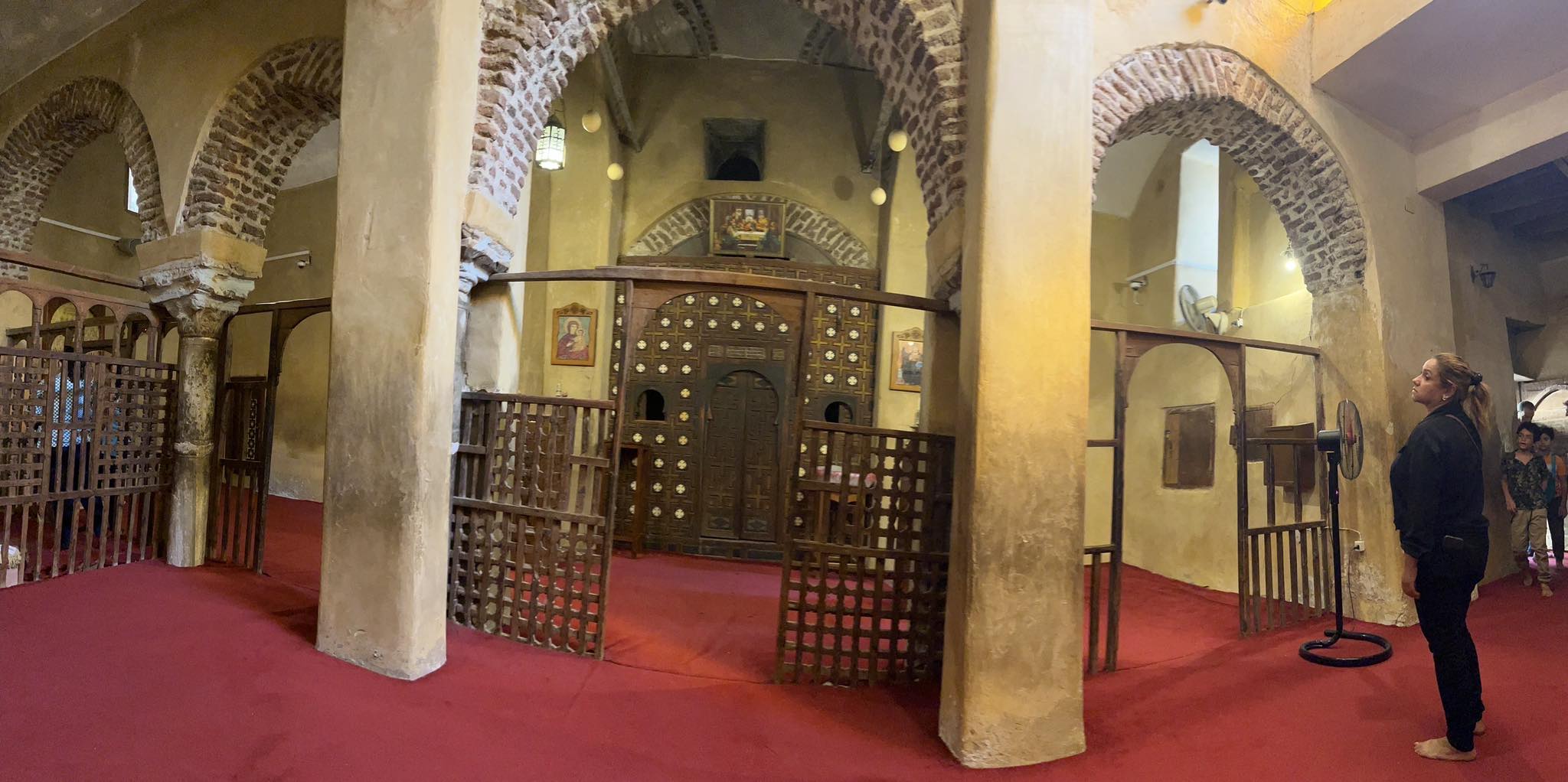

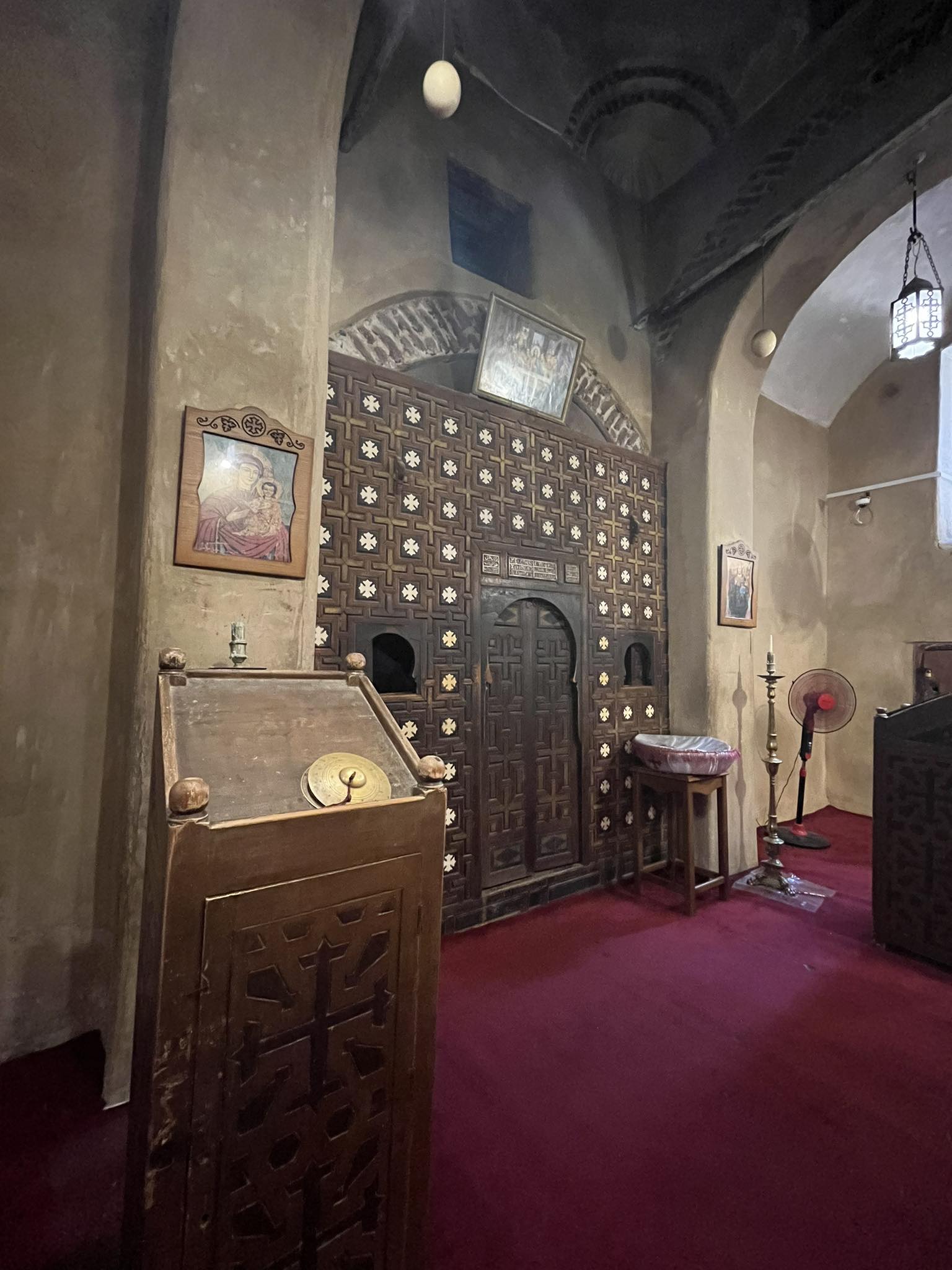
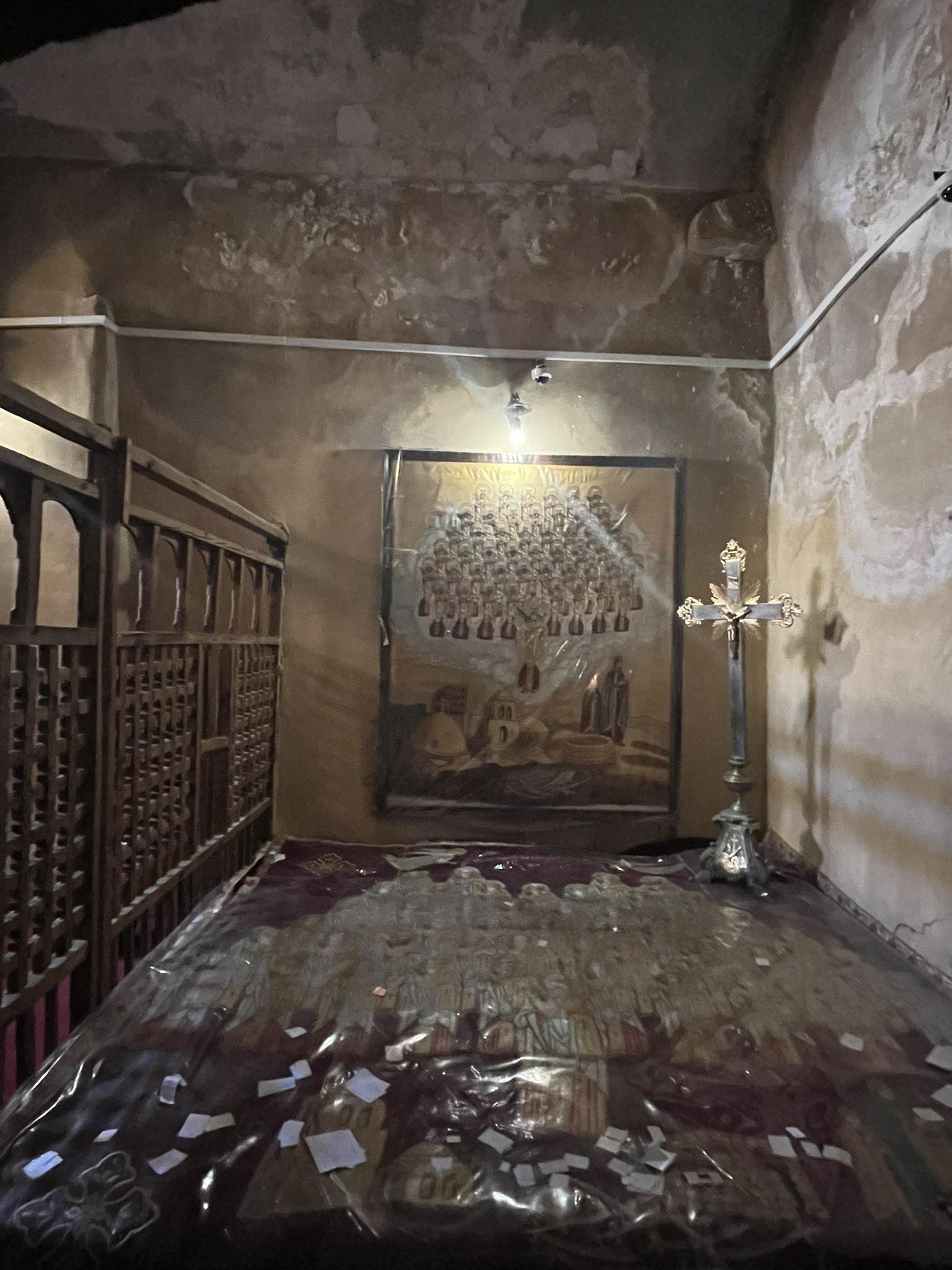
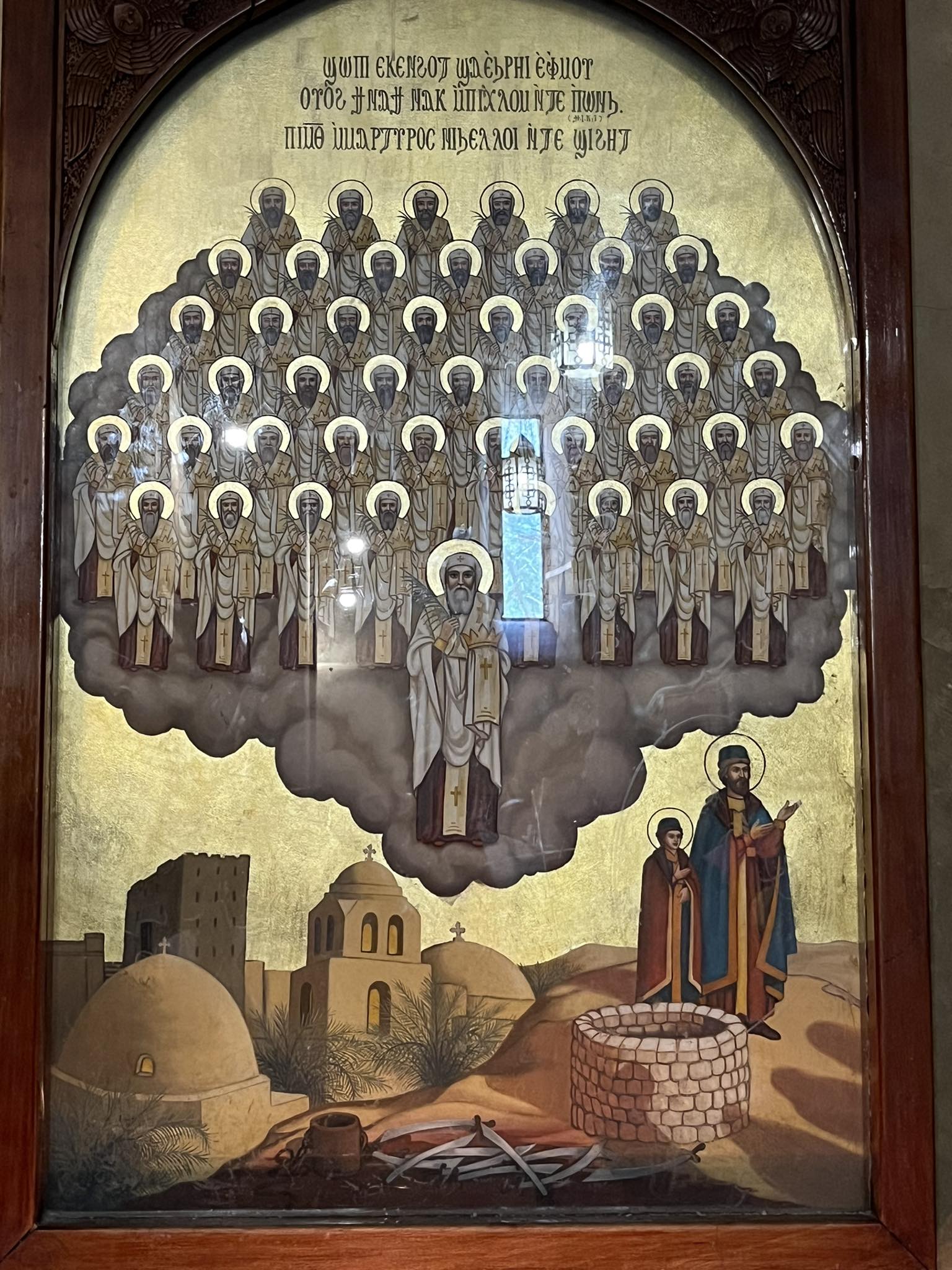
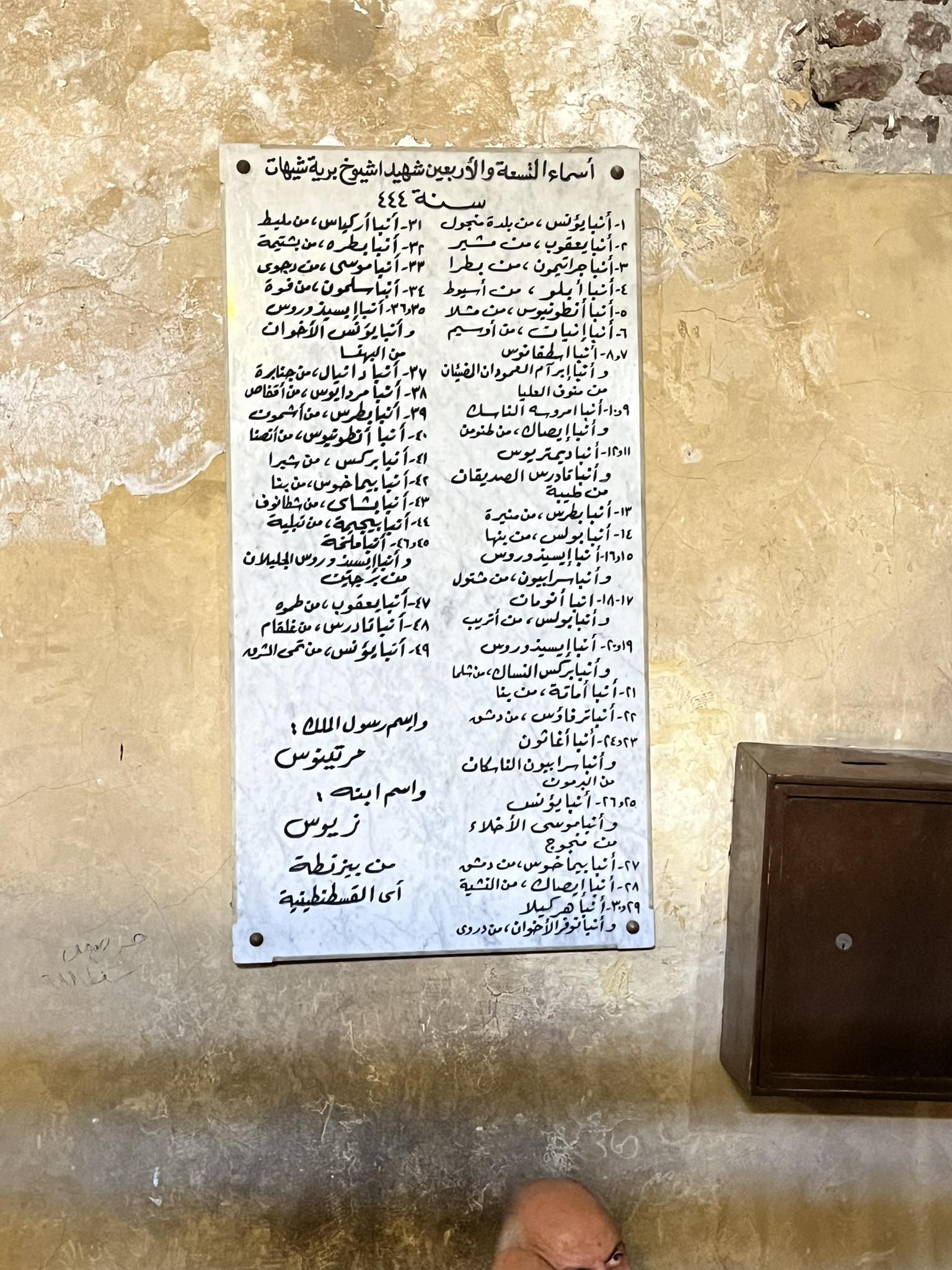
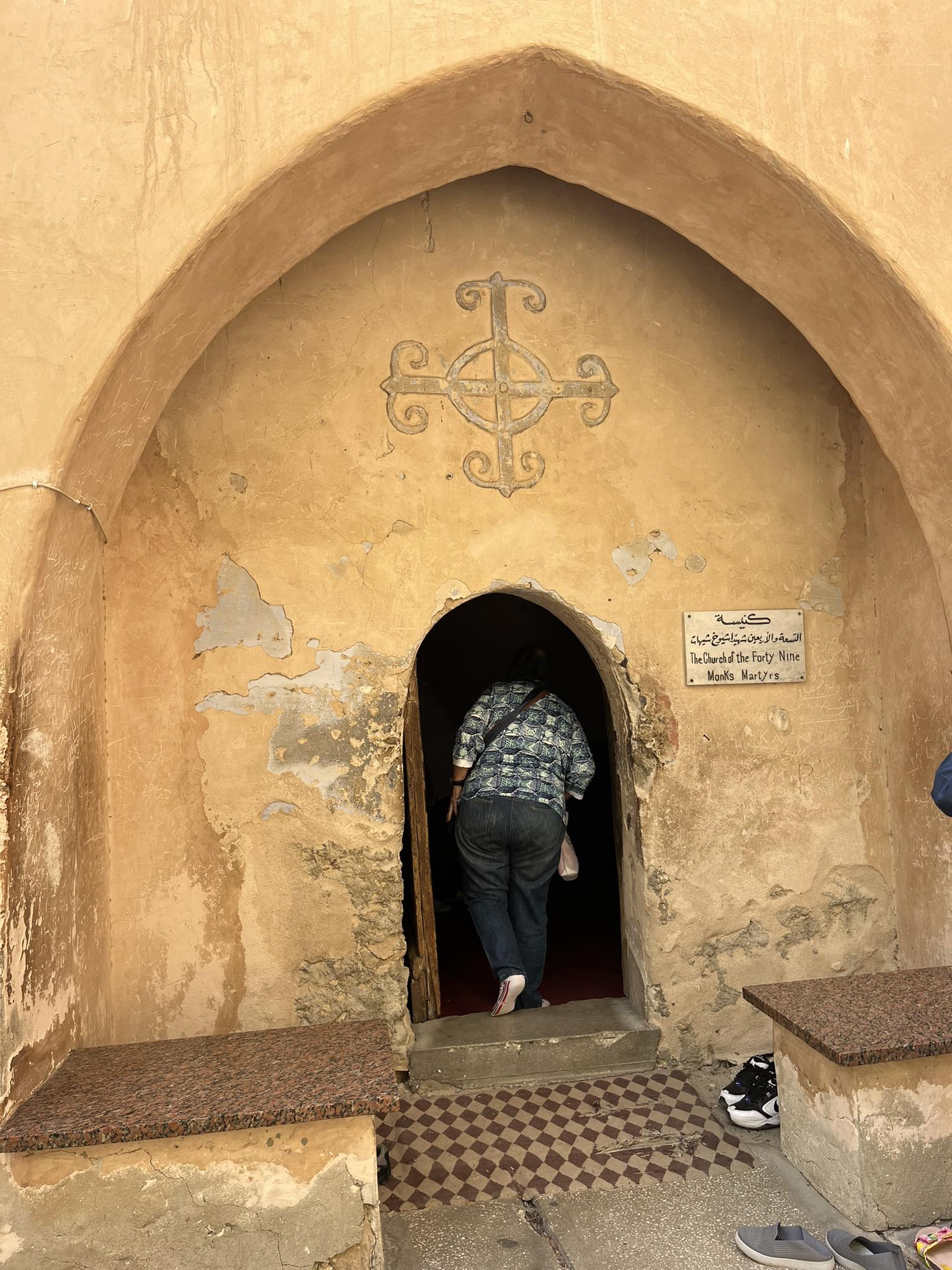
Chrism dome
A tangible heritage that testifies of the Holy Chrism and the history of its making in the monastery of St. Anba Makar, and how the blessing befell all those born of Egyptian women, and all the emperors of the East (Ethiopia in particular) and all the tools of the churches were anointed by it.
The dome of the chrism is originally from the first church of St. Anba Makar, where its location is above the church in the north western corner. It was specially built to serve as an attic, and the consecration of chrism began in it since the Popes of Alexandria moved the seat of their chair from Alexandria to the monastery of St. Anba Makar, immediately after the Khalcedonian Council. That is, at the end of the fifth century
And the holy chrism continued to be cooked with a great and majestic celebration attended by most of the bishops under this dome, until the middle of the fourteenth century, i.e. the chrism of all of Egypt continued to come out of the monastery of St. Macarius for nearly nine consecutive centuries. The last holy chrism was made by Anba Benjamin II in the year 1330 AD.
The time for preparing the Chrism in the early ages was Friday, the end of the forty-day fast, but this date was moved after that and became fixed in the ritual on Maundy Thursday, which is the day the sacrament of thanksgiving (the Eucharist) was instituted.
The Church of the Martyr Father Eskhayron
The name “Abba Eskhayron” means the “strong father”. He is a coptic martyr who was killed in the era of Declation after suffering of severe torture that led to slashing his stomach.
This church was originally part of the church of St. Anba Makar from the front side, and it was most likely the sanctuary of the three youth saints. It was restored after the fall of the church of St. Anba Makar and became a standing church on its own.
This church was connected in the past to another church in the southern part of the monastery called the Church of the Blessed Aristomakhes, which was overtook by a group of schismatic Guyans at one time (535 AD).
After that, the church of father Eskhayron was demolished, and only its western Khorus remained, which was restored and became a dining room for the monastery, with the new dining room adjacent to it and part of it.
Dome of Abba Eskhayrun
This dome is one of the architectural masterpieces of art, and one of the most beautiful monuments in the monastery, and it is a quadruple dome.
It is noted that the dome is not in the central geometrical axe with the entrance to the middle main structure, which indicates that it was built as a dignity for this sanctuary after the nave of the church fell. The sanctuary is older than the dome. It is believed that it contains the body of the martyr Abba Eskhayron or one of the other noble bodies (according to the very old internal law that recommends placing the bodies of the martyrs under the altar).
During the restoration, it was noticed that the dome above this intermediate sanctuary is similar in geometric shape and the number of symmetrical openings, to the dome of St. Benjamin, but on a smaller size, which is believed to be from the seventh century.
The beautiful door
The door is located in the first khorus on the north side, and it used to open onto the nave of the first church of Anba Makar. But with the erection of the separation wall, this door became confined inside it to a small room as if it were a beautiful cabin.
The door was designed with a delicate and exquisite ornaments made of natural bricks that attracts attention. It is believed that the current church of Abba Eskhayron, with its structure and its magnificent dome, bears an important memory as a timeless relic, which prompted those interested in the architecture of the monastery, even in the Middle Ages, to give priority to this church.
A basin of anointing oil for the sick
In the south sanctuary of the church of Abba Eskhayron, and in the north eastern side of the altar, there is a protruding terrace and on it a basin of semi-marble stone, in which we found many layers of strongly frozen olive oil (the “embryos” resisted when trying to remove it). We learned from the rituals history that it is a basin for anointing oil for healing the sick, as the church ritual necessitated the presence of oil on the altar during the sanctification of the sacrifice, where the liturgies and prayers for the sick were read over it, and then all the patients in the church who were staying in a special house attached to the church (the bimaristan) were anointed with it, and prayers and anointing were performed on them with oil after every mass (see the laws of St. Athanasius).
This place is considered of great religous value because it tells the orders of prayer of the law over the anointing oil of the sick with every liturgy.
The fort
It was known in the past as “Al-Jawsaq”, “The Tower” or “Castle”.
It is one of the oldest important monuments in the monastery, and the greatest and largest of all the forts in the Coptic monasteries
It was built by a prominent and wealthy person, its architecture, the huge stones used in it, the thickness of its walls, the prestige of its vaults, and its height, it all reveals the identity of a builder. It was built by King Zenon in the year 482 AD. By the hands of engineers who sent them to the monastery of Anba Makar specifically for that, when he learned that his daughter, Princess Ilaria, who had disappeared from his palace suddenly, she took refuge in this monastery and became intimidated therein at the hands of one of the disciples of Anba Makar, and she lived under the name of the monk Ilari the eunuch until she died.
After that, King Zeno lavished a lot on that monastery and on all the monasteries of Egypt, in honor of the memory of his daughter, who preferred life and death with the monks of Egypt more than enjoying the palaces of the king.
The fort consists of three floors, separated from the stairs leading to it by a movable scaffold that is raised to close the fort after the monks go inside the fort to take refuge in it.
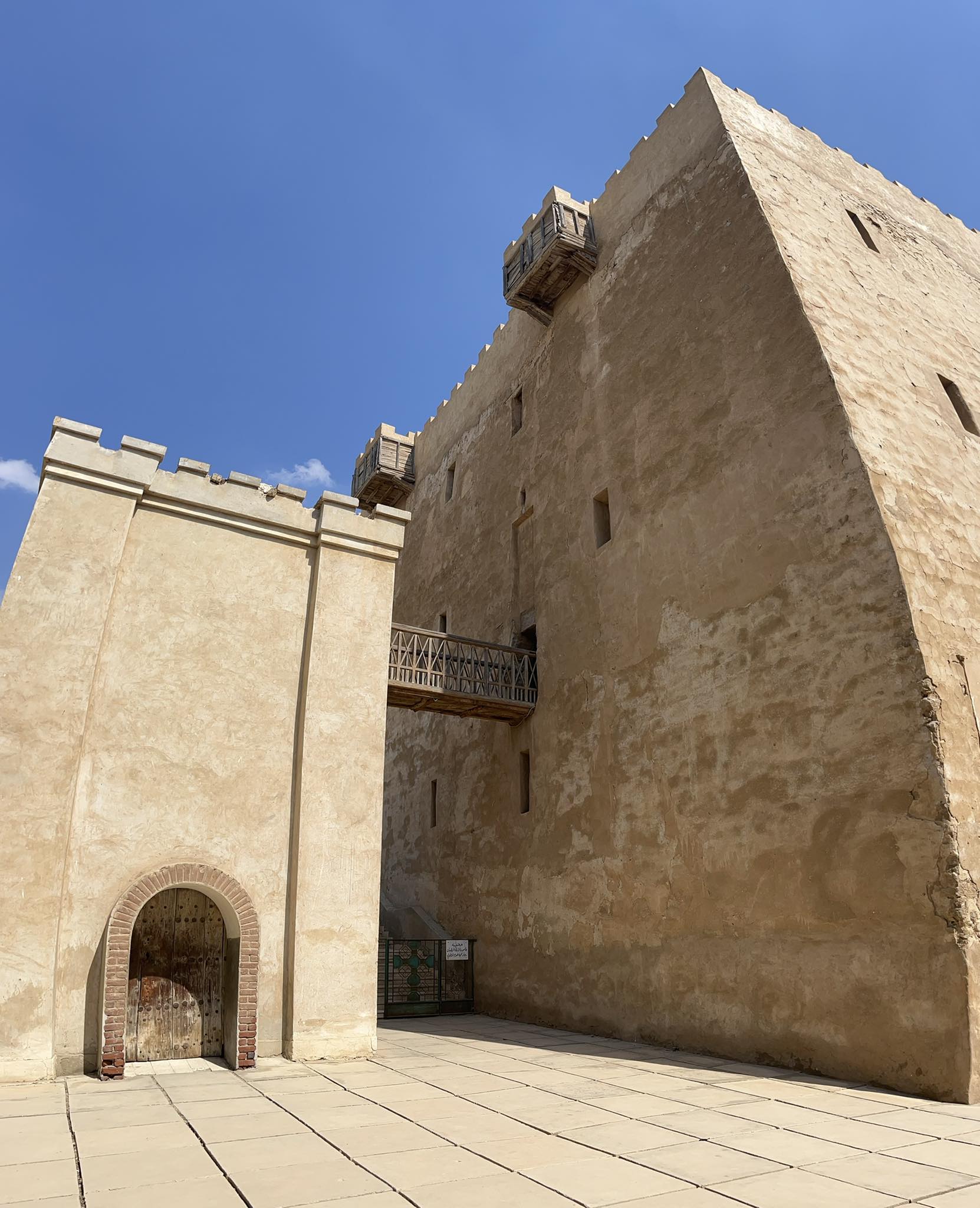
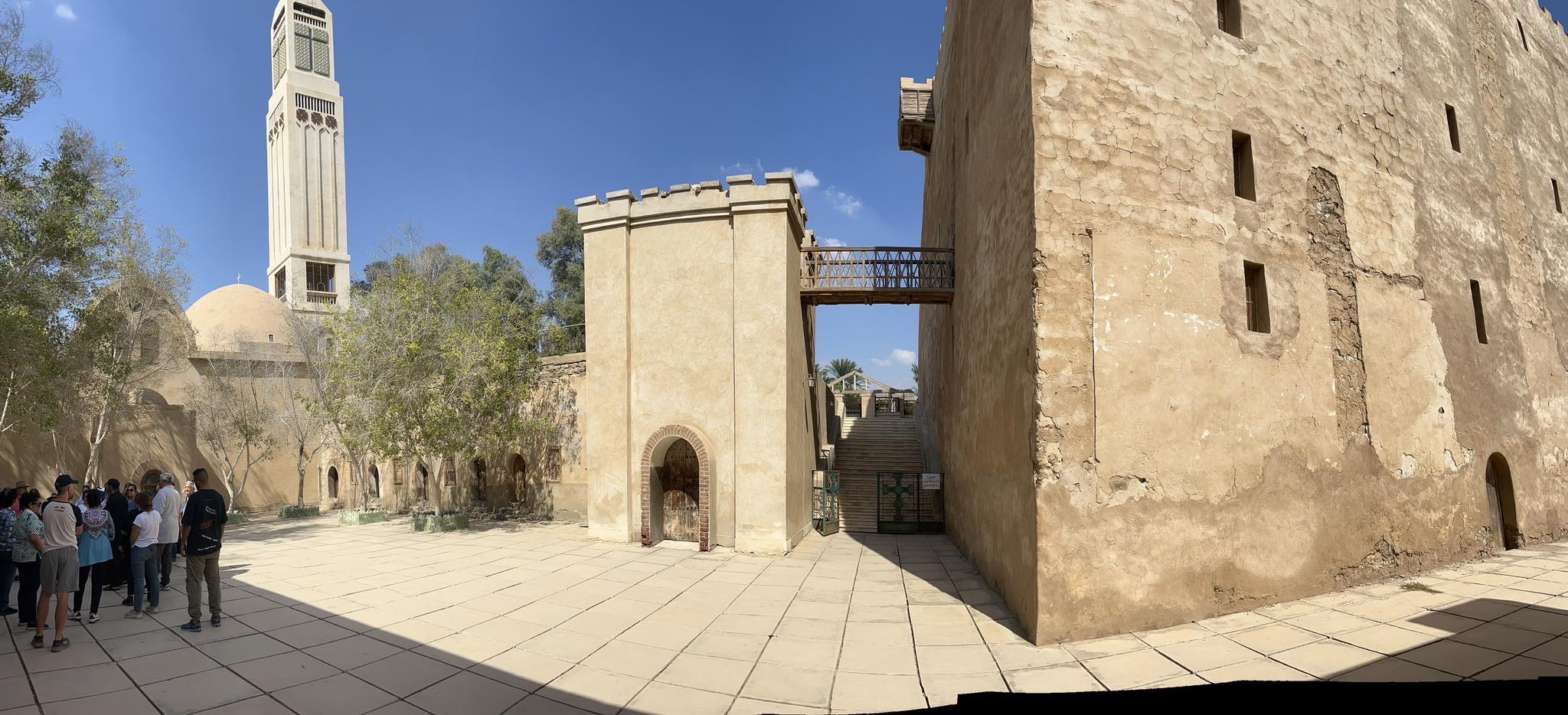
The Old monks’ cells
It is a row of cells in the southern side of the sanctuary of Anba Benjamin according to the old monastic say. But it is not as old as the adjacent building, as it was built on the ruins of the southern sanctuary that were demolished from the church of Anba Makar. which is the sanctuary of Anba Makar, who built in the south of the sanctuary of Anba Benjamin, and the sanctuary of Anba Shenouda, which was next to it from the south side. After the nave of the church was removed for these sanctuaries, it became possible to build these cells that were probably built in the fourteenth century, as they are as old as the eastern wall that was adjacent to them.
The old cell is a room with a very low vault, with a low narrow door, and it may or may not have a small window. Inside this vaulted room is another room that has no openings at all, called a “closet” where the monk prays and sleeps.
In general, the old frying pans have advantages in terms of not softening the body and giving the spirit of poverty and sedation to the monk, and they have disadvantages in terms of insufficient ventilation, lighting and sun.
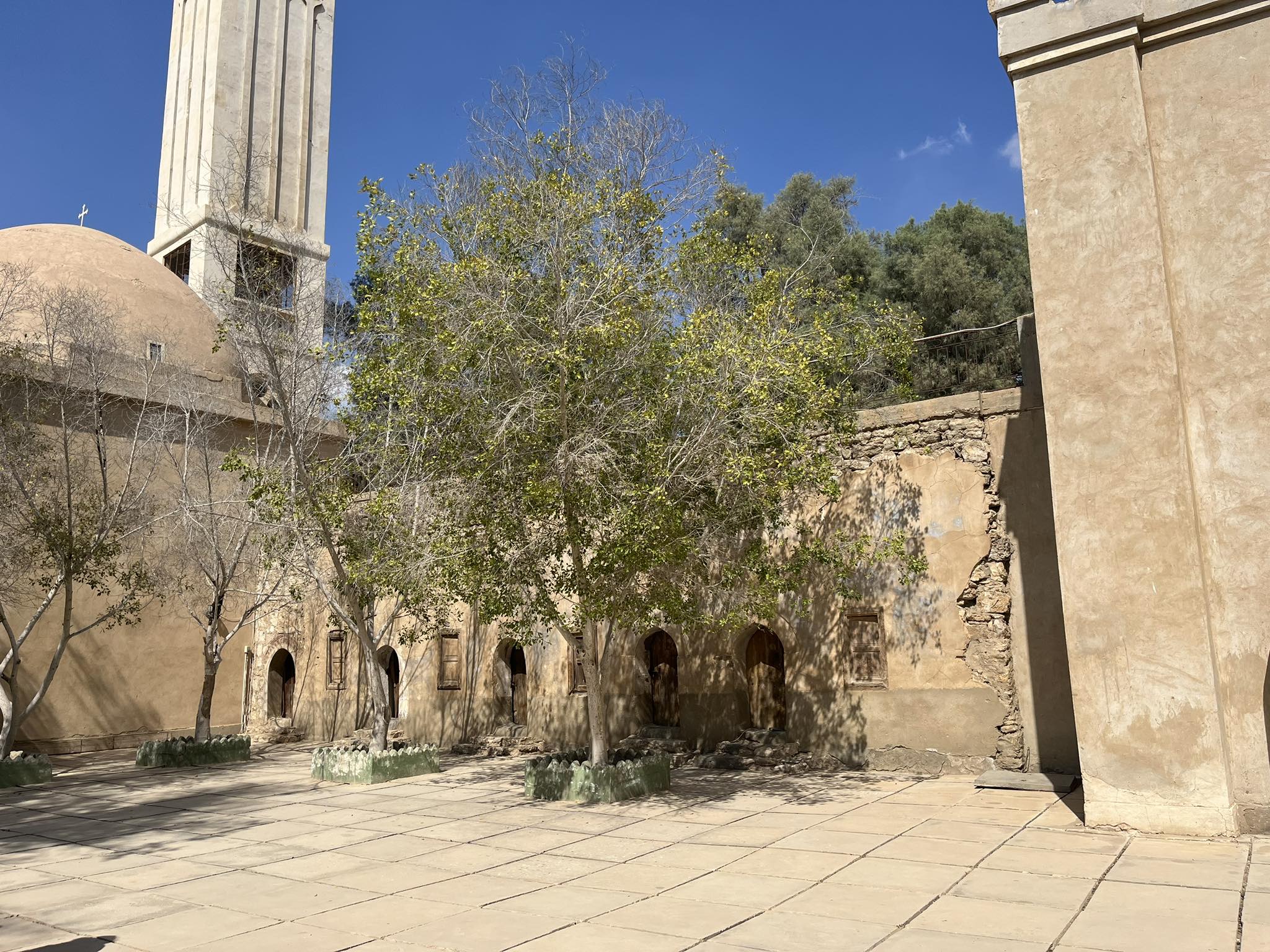

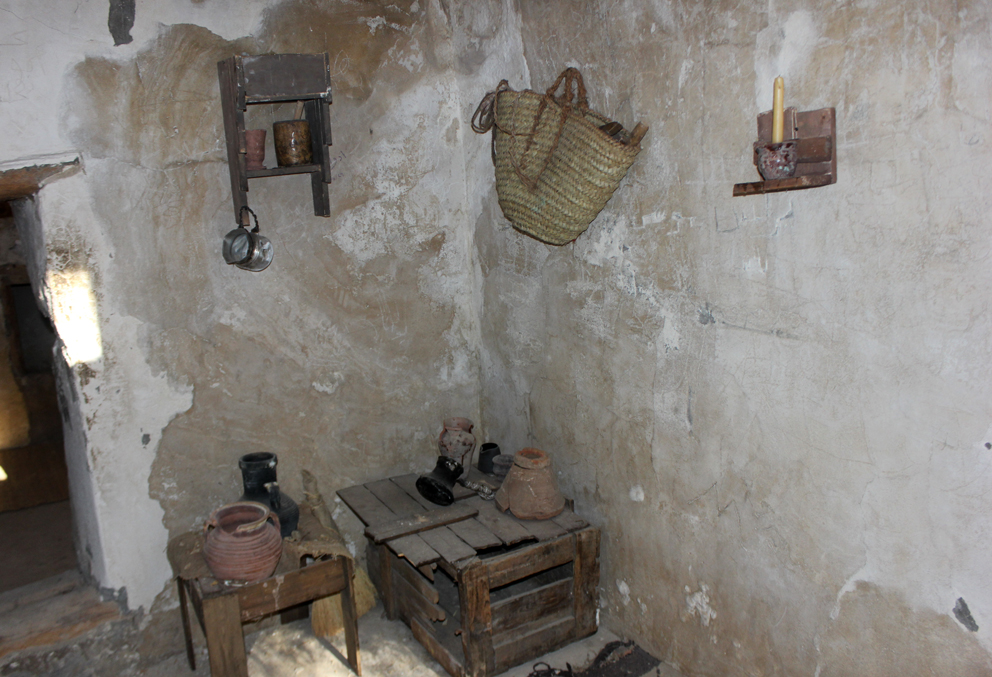
The unknown room
It is located at the end of the monks’ cells row, and it is adjacent to the new staircase that we erected to facilitate the ascent to the fort. Specifically, along the wall of this staircase, there is a round hole made of marble, leading to a room underground lined with a layer of heavy mortar that resists water. The room is 170 cm x 445 cm x 225 cm high. It is believed that it was for the drainage of the baptism water that came from the baptistry room in the sanctuary of Anba Shenouda from the south.. Since this room was located on the same line of the sanctuaries, it must have been used to serve on a function for these sanctuaries.
Stone entrance dating in the seventh century
During the reconstruction and restoration of the monastery, the monks of the took care to preserve every ancient relic. During excavation and during the removal of modern walls, some architectural parts and valuable antique marble pieces were discovered that were hidden inside the walls or behind the modern layers of thick gypsum whitewash or under the soil.
For example, when entering the monastery and descending the large stairs to reach the Church of Anba Makar, you pass under a great ancient arch made of beautiful red bricks, which was the ancient northern entrance to the Church of Anba Makar before the ninth century, and it is likely that it is from the seventh century, because it is of the style of the sanctuary of Anba Benjamin, which was erected during the time of Pope Benjamin (the 38th Patriarch), so it is estimated to be more than 1300 years old. It was found during the removal of the layers of the wall that was built and raised around the church since the fourteenth century, and what was added to this wall of other adjacent external support layers built in recent centuries, due to its collapse due to the construction of toilets directly under it.
A great technical effort was made that took six months until the monks were able to reform this great ancient arch with all its parts, with a load-bearing layer of reinforced concrete from below and above, and joined it on both sides with two reinforced concrete pillars with floor outriggers and shoulders of huge stone to maintain its balance, after it had been completed.
Exposing it, removing what is around it from all sides, and emptying its interior of the buildings that were blocking it, all this work is what the archaeologists learned about, and they marveled at how this bow stood firm while it was dilapidated, and how it was fixed with such strength.
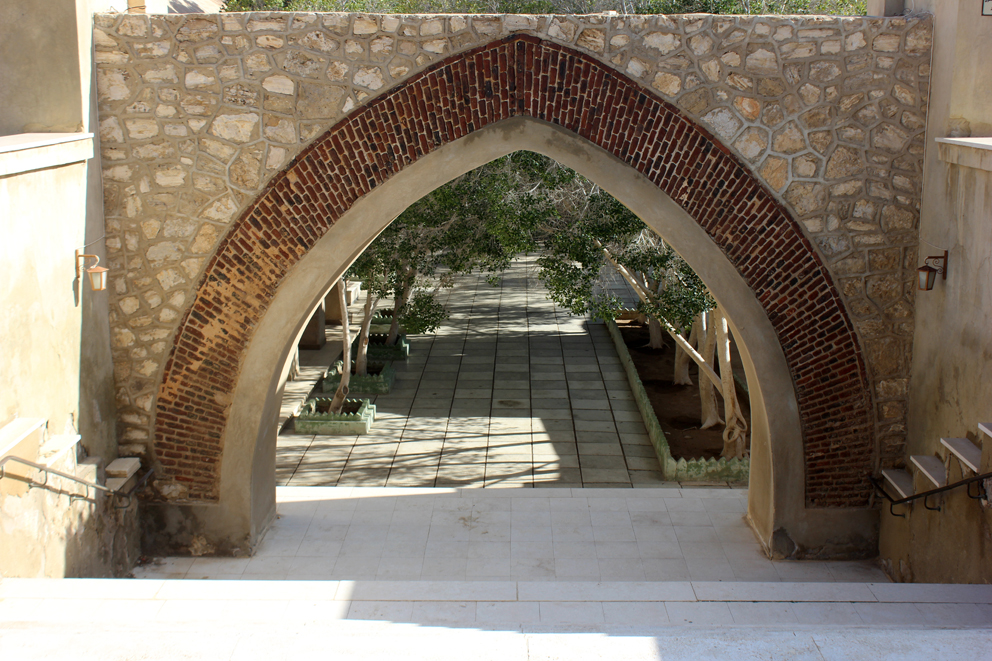











Simply desire to say your article is as surprising The clearness in your post is simply excellent and i could assume you are an expert on this subject Fine with your permission let me to grab your feed to keep up to date with forthcoming post Thanks a million and please carry on the gratifying work
Fantastic site A lot of helpful info here Im sending it to some buddies ans additionally sharing in delicious And naturally thanks on your sweat